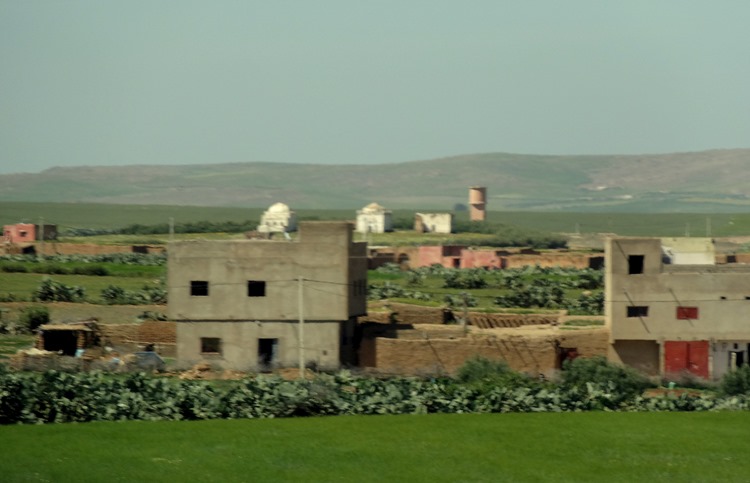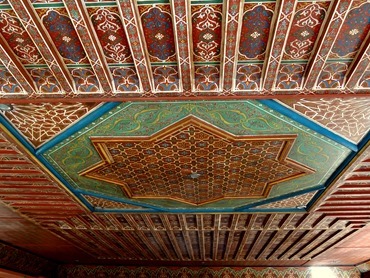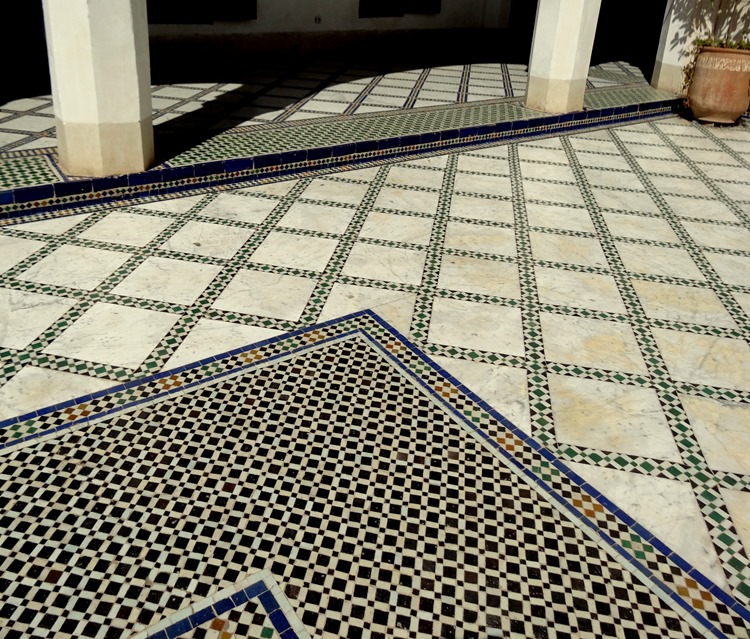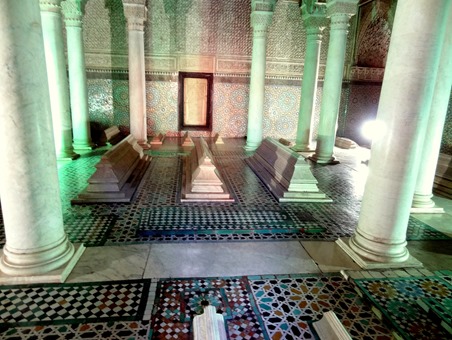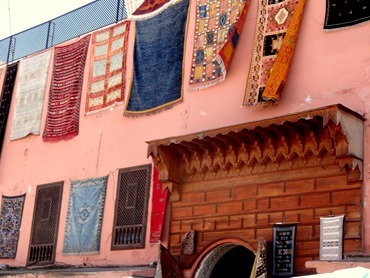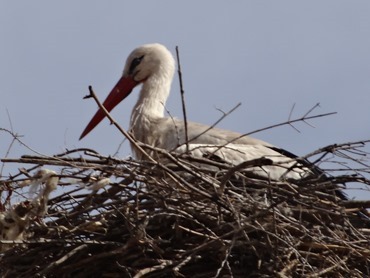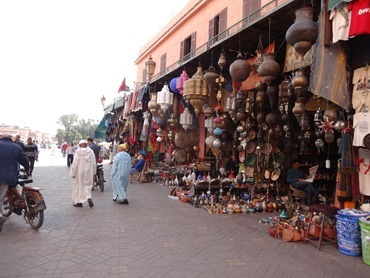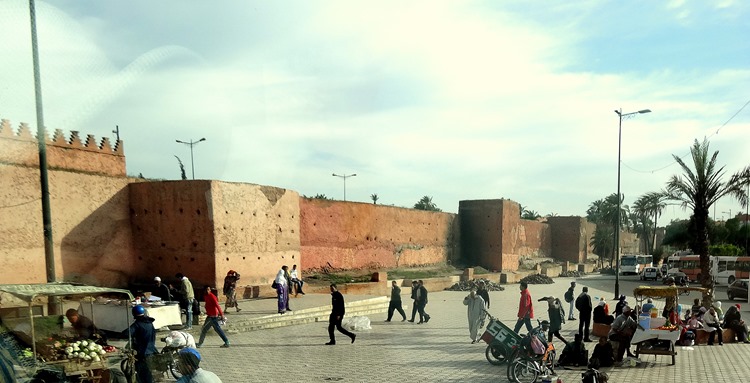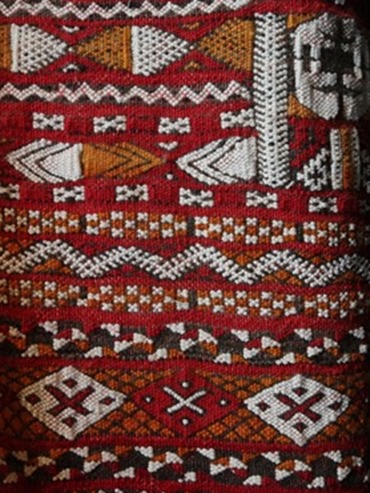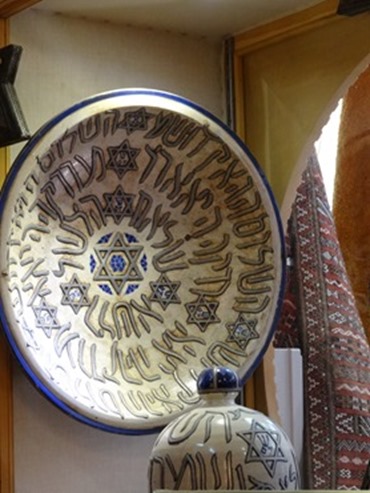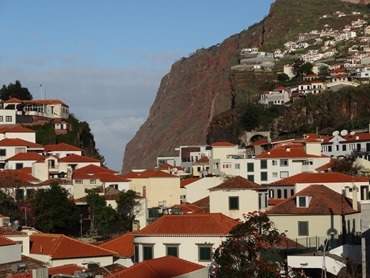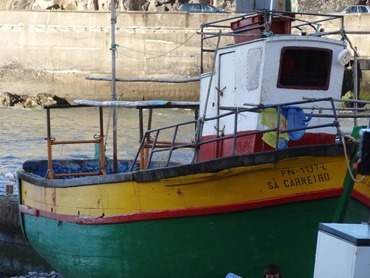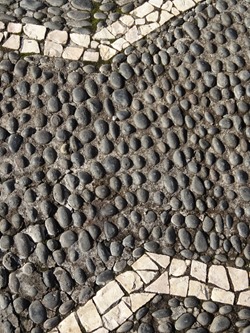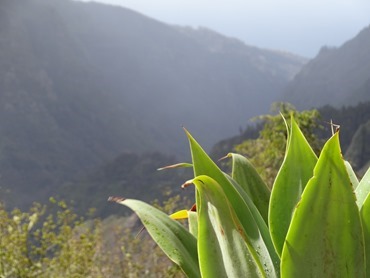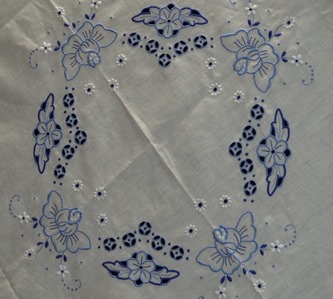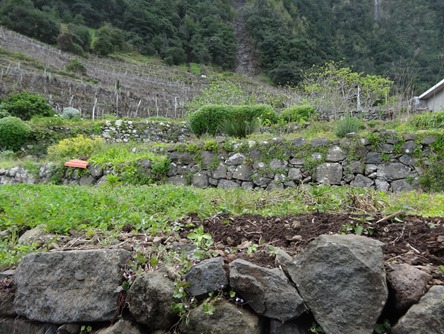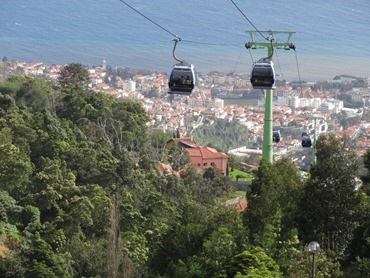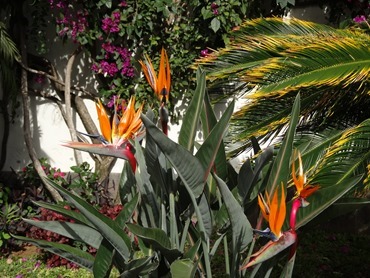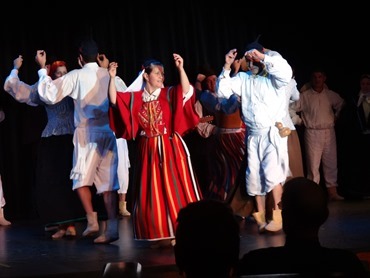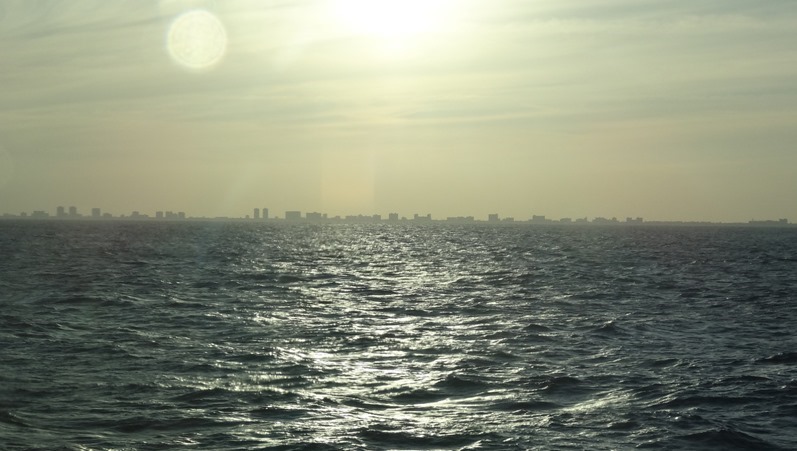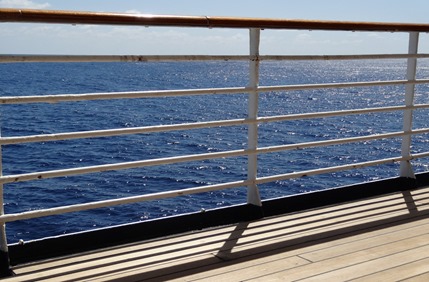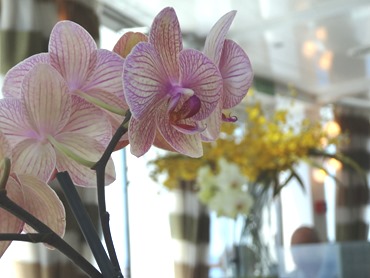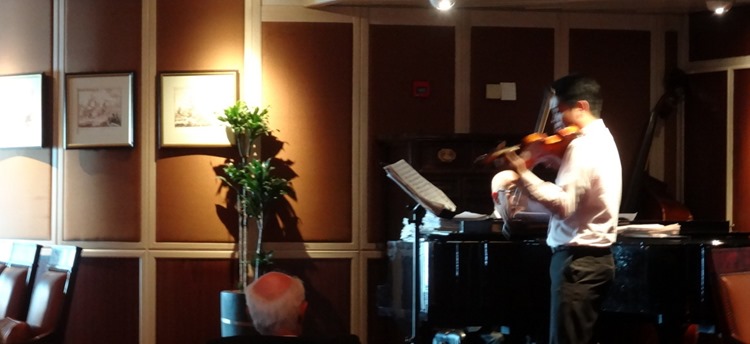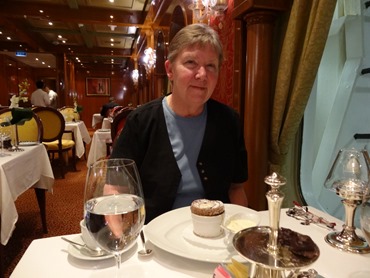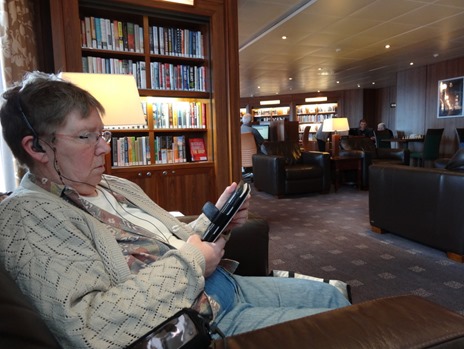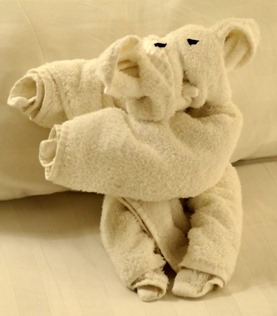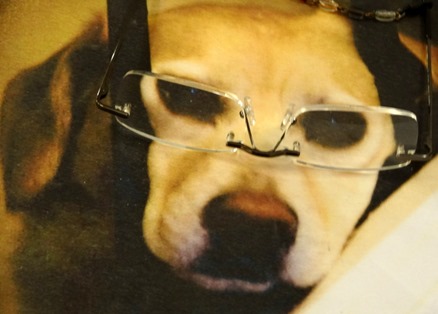Casablanca & Marrakesh, Morocco
On March 26 we arrived in Casablanca, Morocco. Despite Americans’ romantic notion of this city from the movie of the same name (which was actually shot entirely in Hollywood), Casablanca is a large commercial city (3.5 million people) with a reputation for having little charm.
We opted to spend the day on an excursion to Marrakesh, about 150 miles to the south. We travelled by bus, rather than the Marrakesh Express, and managed to get there after a long drive (about 3.5 hours each way). We saw many villages, each with a minaret, & flocks of sheep & goats. One interesting thing was the widespread use of prickly pear cactus as hedgerows & fencing for grazing animals. We were told that they don’t eat the cactus, but they do make oil from it & some other products. We even saw a large hill planted with rows of prickly pears like a farmer’s field.
Casablanca is known as the “white city”; the name means “white house” & originated in the fact that it had so many white housesthat sailors could easily identify it from sea. Marrakesh (which is inland, at the foot of the High Atlas mountains) is called the “red city” because most of its buildings are made of reddish materials (originally they used the local red mud). It is a pretty large city & very busy and crowded on the streets. The name of the country, Morocco, is derived from the name Marrakesh. Our first stop was at a hotel for lunch. It was a beautiful hotel, but the lunch was disappointing in that it was not Moroccan cuisine (we did get some very good Moroccan cuisine, but it was on the ship after our return!).
The air conditioning in the bus didn’t work during the long hot (sun in my face) drive to Marrakesh, but while we ate lunch they fixed it. The guide told us (with a straight face) that the bus driver had explained that someone on the bus must have been using a computer, which caused a virus to infect the air conditioning system. This is the “computers work by magic” school of technology, which reminded me of the film Independence Day, in which Jeff Goldblum was able to tap into the alien computer system in a few minutes through wifi internet with his laptop & read their plans to conquer Earth (apparently the aliens not only had the same technology we do, but also communicated digitally in English, even though they also possessed scary mental powers). These aliens also generously provided free Earth-style wifi in their mothership, without even using password protections, to enable Jeff to upload a virus to their system that destroyed all their ships in just a few minutes (but there was no wifi on our bus, so even that theory wouldn’t apply). Isn’t magic technology wonderful?
The first place we visited after lunch was the Bahia (“Brilliant”) Palace. It is relatively new for a Marrakesh landmark, having been built in the 19th century. But it is full of lavish Moorish decoration. The intricate carving in the walls that looks like sculpted stone is actually sculpted stucco. The ceilings of this building are made of carved cedarwood. You are going to see a lot of this stuff, both in this posting and in the Grenada, Spain posting yet to come, because we really liked it. So bear with me & enjoy it.
We also visited the Saadian Tombs. Members of the Saadian dynasty (15th & 16th centuries) are buried here. The first sultan of the next dynasty wanted to eliminate all such recollections of the Saadians, but because it would have been bad luck to desecrate the tombs he left them intact but blocked off all access. They were mostly forgotten until rediscoved in 1917.
Outside the tombs is the Kasbah Mosque, built in the 12th Century. We continued to the carpet store (don’t ask), through the colorful streets of this part of Marrakesh. The city is home to storks, who nest on top of urban walls & buildings here.
Last, but far from least, we visited the Djemaa el Fna (assembly of the dead) and the nearby Koutoubia minaret, which is the symbol of Marrakesh. If you have seen the remake of Hitchcock’s “The Man Who Knew Too Much,” you may recognize the Djemaa el Fna as the large colorful plaza where Jimmy Stewart learns the secret from a dying man that causes him and Doris Day so much trouble for the rest of the film. It is a large open area surrounded by cafes & vendors that fills up as the day lengthens with food carts (particularly orange juice – Moroccan oranges are bitter and tough, not great to eat) & snake charmers,monkeys, acrobats & other entertainers (who charge a Euro, or more if they think you are gullible, to take their picture). We were there in late afternoon, so many people were still setting up their stalls; things reportedly get really interesting at night. Although you have to be careful (you have seen Indiana Jones, so you know how easy it is to get abducted in such places); I turned away for a minute to take a picture and some guy came up and took Mary’s hand & tried to pick her up.
The Koutoubia Minaret is about 180 feet tall. It was built in the 12th Century, and the mosque associated with it had to be rebuilt twice (once to correct its alignment with Mecca). It can be seen all over the old part of the city & is quite beautiful.
Then there were a few more random things worth seeing: the Theatre Royale, a view of the High Atlas mountains from Marrakesh, and the city walls (which look a lot like Taroudent’s, but aren’t quite as old).
The trip back to Casablanca was long, but there was a dramatic sunset about halfway there.
Back in Casablanca there were two more stops before reaching the ship (where they had kept the dining room open for us, and we enjoyed a terrific Morrocan style dinner). First we stopped to see the Hassan II Mosque, which was near the ship. Built recently (1989) this is supposedly the largest mosque in the world. It holds about 20,000 worshipers inside the sanctuary and another 80-100,000 in the courtyard. It has a retractable roof (3.5 minutes to open) & has the world’s tallest minaret at 689 feet. OK, that was pretty impressive, but the other stop was at (what else?) Rick’s Cafe. As I mentioned at the beginning, the film Casablanca was filmed entirely in Hollywood, so Humphrey Bogart & Ingrid Bergman never set foot in this place. It was built just 9 years ago by a woman from Portland Oregon named Kathy Kriger, so it is strictly a tourist attraction. I am sure that if we had gone inside Sam would have played it again (and again), but we didn’t get out of the bus for this one, and were only too happy to finally reach the ship.
Agadir & Taroudant, Morocco
Early in the morning of March 25 we docked at Agadir, Morocco. Agadir is pretty old: the Portuguese established a trading center here in the 15th Century or so, and there was a famous incident at Agadir in 1912 when the Germans sent in a gunboat to challenge the French & almost ignited World War I a couple of years early. But in 1960 there was a devastating earthquake that destroyed more than 80% of the city & killed about 15,000 people in 15 seconds, so little remains of historic Agadir. It has been rebuilt as a resort town, and also seems to have a busy commercial port, but there was little to see here that interested us.
So we opted instead for a land excursion to ancient Taroudant, about 50 miles inland at the foot of the High Atlas mountains. Taroudant is a walled city that is about 1000 years old, and was the capital of Morocco for a while in the 15th or 16th century. It was also an important trading stop on the old caravan routes.
On the way to Taroudant we saw vast areas, both flat & mountainous, that are full of Argan trees. This is a tree that only grows in this part of Morocco, and produces a fruit similar to an olive but much harder. We visited a women’s cooperative in Taroudant that was producing an impressive variety of oils & creams from this fruit, which is still stone ground by hand. What was most interesting, however, is that goats actually climb into these trees to eat the fruit; we had heard of this but never seen it before.
Just outside the walls of Taroudant we stopped at a restaurant for coffee & a cookie. We ate in a courtyard & the grounds were lush with orange trees, palms, etc.
Taroudant is surrounded by high medieval looking walls with a reddish color that comes from the local soil. The walls are somewhat in disrepair in some areas, but are pretty impressive nonetheless. This is pretty much the signature view of Taroudant (I think we will see more of this at Marrakesh tomorrow).
We spent most of the time at Taroudant walking around the souks (open air markets), which were labyrinthine. It is amazing that no one was lost from the group. Many of the vendors were nixing photos, but I got a few of the souks & of some of the wares, including spices, fruits, clothes & art objects (read the captions).
We spent some time in an artisan cooperative store that had many beautiful things, probably at good prices (if you bargain effectively), but still quite a lot of money. And after all, how could we tell if something is really worth what they are charging? Mary bought an unusual pair of moonstone & silver earrings.
You might have noticed in that last picture that the silver piece has a star of David in the middle and Hebrew lettering on tablets at the top. Our guide told us that, until the Arab conquest in (I think) the 8th Century, the Berbers who were the indigenous population of Morocco (she is a Berber) were Jews & Christians. Many Jews moved to Morocco after the Spanish reconquista in Spain, and they were known hereabouts for their metalworking skills. She says that there were many Jews living in Morocco until 1948, when almost all of them moved to Israel. Anyway, Taroudant has a Jewish Quarter to this day (although I think it is now a geographic designation rather than an actual Jewish neighborhood). We saw a number of items in the craft cooperative with Jewish themes & Hebrew lettering, although I doubt they are still made by Jews today.
As I mentioned, the Berbers were the original inhabitants of this area; they are not ethnic Arabs and have their own language, which is one of the three official languages of Morocco (along with Arabic & French). The ancient Greeks called them “barbarians,” as they did anyone who didn’t speak Greek. From this they became known as Barbary (as in Barbary pirates, of Thomas Jefferson fame), and this was later updated to Berber. We saw many of them around Taroudant dressed in traditional robes for men & veiled outfits for women. I only have a few pictures, since I didn’t want to offend anybody.
So, to finish up Taroudant, I told you we visited a women’s cooperative, & it had beautiful old tiling on the walls. We saw a bridal boutique and some familiar looking signs with Arabic (or maybe Berber?) writing. And a gas station selling Libyan oil.
On the trip back to Agadir we passed the High Atlas mountains & some currently dry riverbeds that are called “Wadies” in North Africa & the Middle East.
Before returning to the ship we visited the old Casbah of Agadir, among the few buildings to survive the earthquake (although its not in great shape). It is on top of a hill, giving a great view of Agadir, and there were some guys there selling camel rides. One of our party rode a camel, & seemed to come through it OK.
So that’s it for a very full day on an excursion that was finished by 1:30! No towel animals, so I will leave you with some fruit art (I bet you weren’t expecting that).
Madeira (day 2), Around the Island
On our second day in Madeira we were on a private bus tour that took us throughout the western portion of this beautiful island. Madeira really has everything: seashores & fishing villages, cliffs & mountains, flowers rocks & surf. This was a long (8 hours) tour & we visited a number of places, so this post is going to be mostly made up of pictures (I’m sure you are grateful to hear that).
First we visited the picturesque fishing village of Camara de Lobos, a favorite vacation spot during the 1950’s of Winston Churchill, who liked to paint the scenery here. The town was full of beautiful plants & flowers. I wish I could name all the flowers, but I can’t (as you will see from the captions).
A little further along the coast we stopped at Cabo Girao, at 580 meters the second highest sea cliffs in the world (our guide thought the highest might be in Taiwan, but wasn’t sure). There is a glass platform to walk on extending out over the cliff.
OK, next was Ribeira Brava, a small resort town (village). They had a lot of construction going on, apparently moving rocks & rubble from the river to the shore, where they are building up the area behind their sea wall, which held off a roaring surf. There was a lovely little 16th century church, all dressed up for Lent. Mary bought a t-shirt here with an embroidered bird of paradise on it – less than half the price asked for the same shirt in Funchal.
Next we drove way up into the mountains and, after a stop for some photos & to visit a tourist store, we drove across a relatively flat, soggy high plans called Paul da Sierra. It was really foggy during this part of the trip, so very few pictures (and much sleeping). I may have mentioned that, in addition to wine, Madeira is known for its fine embroidery. Not cheap though: we saw an embroidered table cloth in a Funchal window selling for about $9000.00! And you know that if you bought it someone would spill the wine the first time you used it. In the mountaintop shop was some nice embroidery selling for hundreds rather than thousands of dollars, but we took a pass anyway.
We stopped for lunch (marinated tuna for us) in the little village of Porto Moniz on the northwest tip of Madeira, about as far (47 miles) from Funchal as you can go without getting wet. About 4000 people live there. We stopped for pictures on the mountainside above the town, but the best views were at the ocean where the surf pounded some fabulous black rocks. Madeira is a volcanic island (some say it is what is left of the lost continent of Atlantis) & we saw quite a lot of volcanic rock, natural and used to build walls & buildings. I mentioned that the whole island is heavily terraced for houses and small fields, and you can see below some of the terracing above Porto Moniz with grape vines (not yet green) on some levels.
You are probably wondering by now how many more stops, but there are just two more. Seixal is a very small village with a profusion of wildflowers on the hillside, including a whole field of wild lillies.
And finally, Sao Vicente. This village was originally at the seashore, but was repeatedly pillaged by pirates. So in the 16th century they moved the whole village inland about a mile & rebuilt it in a valley behind some cliffs & rocks where it could no longer be seen from the sea.
And so back to Prinsendam, well in time to make the all aboard deadline of 4:30. But then the Captain announced that they were about to replace the capstan on one of the engines, a huge piece of metal that could prove dangerous at sea. So our departure was delayed until 8:00. And Funchal looked quite beautiful after dark.
But then departure was delayed until 10:00. Then about 1:00 in the morning the ship was filled with a loud grinding sound that lasted quite a while, which seems to have been the testing for the work that had been again delayed. So we didn’t set sail for Agadir until about 2:00 AM, but we still made it to Agadir Morocco on time early Monday morning. However, that is another story. I will close this installment with a couple of more towel animals.
Madeira (Day 1), Funchal
Land! At last! After more than a week with nothing to look at but water, the sight & feel of solid land is more than welcome. The last few days at sea were quite rough. We detoured to the south to avoid a big storm paralleling our path about 250 miles to the north. We didn’t see much rain, but the sea was very rough. Glassware was jumping off the shelves, plates were migrating across tables, chairs would move across the floor (sometimes with people in them), & wine buckets fell from their pedestals in the restaurant, spilling bottles & ice across the floor. At night doors would move if not latched & everything had to be secured. This also made walking difficult; it seemed that walking across a level floor was always an uphill climb as the ship rocked back & forth. This was a big change from the first few days when we were crossing the relatively calm Sargasso Sea, where the water was deep blue & the ship remained mostly upright.
We arrived in Funchal, Madeira at about 3:00 on the afternoon of March 22, which was about 3 hours late. This meant that most things were closed by the time we got into town. Madeira is an autonomous region of Portugal, located off the coast of Africa. It is an archipelago of several islands, the largest of which is (surprise!) Madeira. About a quarter of a million people live there. Madeira is most famous for its wine, also called Madeira, which is fortified with brandy or spirits & made with a heat process. The heat process was discovered when the wine was left in a hold during a tropical voyage, and instead of being spoiled as expected it was improved. After that discovery Madeira wine would be shipped in the holds of ships on tropical voyages just to cure it by the heat of the voyage, and later someone developed a way to duplicate the process by keeping it heated on land. They began to add spirits to the wine to preserve it during the years when its delivery to Europe was interrupted while Napoleon blockaded Madeira’s shipping. Madeira wine was often called “sack” (see Shakespeare’s Henry IV, in which Falstaff calls it that) because pirates routinely sacked the shipments. Another term is Malmsey (the American founding fathers used Malmsey to toast independence), which is a factory that produces one kind of Madeira wine. So much for drinking.
Madeira is very mountainous, and Funchal is situated on a harbor that is surrounded by high land.
So, with little time left on the first afternoon we headed right for the cable car that takes you to Monte, a mountain overlooking the city. Its a 4 mile trip suspended high in the air; you could see the port & the ship, & also look down into people’s yards and patios. As you can see from the picture above Funchal, and in fact most of the island, is extensively terraced so just about everyone has a view of the water over the top of their neighbors’ houses.
On top of Monte is a community with a church & several formal gardens. The signature Funchal experience involves climbing into a wicker sleigh-type thing, and then a couple of Madeirans wearing white shirts & a straw boater hat push you down the hill at great speed. By the time we got to Monte they were in the process of closing up for the day & no one was actually riding in the sleighs. So, we walked around for a little bit & then caught the return cable car before they closed up at 5:30.
We then walked around the town for a while. It is a nice walking city, & we saw (inter alia) the legislature (no admittance), the cathedral (didn’t enter because they were having mass) & an interesting enclosed produce market. The buildings were mostly white stucco with red tile roofs & a number of them had tile work as well.
Among the most interesting features here were the mosaic sidewalks, similar to what we saw in Brazil last year, but very different patterns. This must be a Portuguese thing, I guess. Here are just a few of the interesting patterns we came across, along with a closeup that shows what the black & white stones look like.
Madeira was discovered in 1419 by a fellow named Zarco (sounds like a space villain). There is a statue of him and also a sidewalk mosaic tribute.
Another discoverer who lived here for a couple of years about 50 years after Zarco was Christopher Columbus. He came to Madeira, married the governor’s daughter, who died in childbirth a year or so later, after which Columbus left the island. Apparently nothing else is known about Columbus’s sojourn here, but that doesn’t stop enterprising Madeirans from maintaining a house that tourists can visit & imagine that Columbus lived there. We did not visit that one.
While walking around town we saw a fellow with a golden eagle, some swans in a park, a sparsely attended political rally near the city hall (there seems to be an election campaign going on; we saw communist party posters several places), and many beautiful flowers.
The first night there was a show on the ship by a Grupo Folclore da Ponta do Sol, a Madeiran folkdancing group from a village called Ponta do Sol not far from Funchal. Very colorful costumes & an interesting performance (although it would have trouble living up to the Samba show we saw in Rio last year).
So ended our first (short) day in Madeira, and this post is already pretty long. So I will save the second (long) day for the next posting.
Crossing the Atlantic on Prinsendam
Goodbye Ft Lauderdale! We left Ft Lauderdale at about 5:30 PM on March 14. As I write this we are in mid-Atlantic and there is nothing around but water. It has only been a few days, but I can see why Columbus’s men got spooked after a month or more of nothing but water and no reason beyond their weird Captain’s theories to think they would ever reach land. But we know we will reach land this Friday, so all is well.
Before going any further, I want to welcome those of you who don’t know us but are following this blog at the invitation of friends or relatives who are fellow passengers. These are the voyages of Rick & Mary Bader, whose continuing mission is to boldly go where no one . . . no, wait a minute, that’s not right. But it is true that this blog is about our experiences and interests and things we think our friends and relatives might find interesting. Although all of us on the Prinsendam are traveling on the same ship to the same ports, your friend’s or relative’s experiences on board and in the ports may be very different from ours. So while this blog will give you a general idea about the voyage and some of the ports we visit, don’t assume that everything you see here was part of your friend’s personal experience or that the blog covers everything that your friend saw or did. With that caveat, welcome aboard.
I also want to remind everybody of two things about reading this blog. First, the most recent blog post will always be at the top, so the chronology is from bottom to top. This means that when (like today, if all goes well) there are multiple postings on a single day you should scroll down to the earliest one if you want to read them in order. Second, if you scroll your mouse over a picture a caption will pop up. Sometimes it will just identify the picture, but often it will contain explanatory text. So if you don’t take advantage of that feature you will be missing some brilliant writing that might be illuminating.
As I have mentioned before, the Prinsendam is a very small ship by cruise industry standards. It has a capacity of 835 passengers (along with about 450 crew), but on this cruise we are told there are only between 450 and 550 passengers (estimates vary). Of course, this makes the ship even less crowded than usual, and there is generally no problem finding a table in the Lido (the buffet restaurant) or a seat in the library. I expect it also will make it easier to get off the ship in tender ports (where the ship anchors offshore and ferries passengers into port with the lifeboats, called tenders). There are many empty seats in the main dining room and they have closed the small extra dining room. So this will be a more intimate cruise than the last one, and maybe that will minimize some of the sharp elbows and frayed nerves we sometimes saw on our last cruise. So here is the Prinsendam (we didn’t take these).
In the second picture look at the deck just below the orange lifeboats, the first deck painted white, which has an outside deck on which you can walk all the way around the ship (a quarter mile). Counting from the left, the second window is our cabin (if you count 7 more windows you get to the cabin we had last year on the South America cruise). From this angle the window looks tiny, but it is actually about 5 feet wide and provides a very nice unobstructed view (mostly just water so far, of course, but we expect more later). This cabin is about 2 feet longer than the one we had last year, which makes a significant difference in using the room. It has a bathtub as well, which I think is pretty rare at sea (last year we had just a shower). It is a pretty big step up into the tub, though, and I can’t imagine how some of the older people who are plentiful on this ship are able to handle it. We actually have 2 kids on the ship this year, a 7 year old & a 3 year old. I expect them to get very bored!
The Prinsendam was in drydock for a couple of weeks in November & we were interested to see all the changes. Most are not really visible, such as a new propeller that is supposed to be quieter & more fuel efficient and upgraded air conditioning & plumbing, which had been troublesome. I am told they replaced all the verandas, but we don’t have access to those. There was a lot of talk about the Showroom at Sea being completely redone, but it looks exactly the same to us as it did last year. The primary visible change is that the open eating deck on the back of the Lido restaurant, where we spent many enjoyable hours outside looking at the ports during breakfast & lunch, has been completely enclosed. They did a nice job of it: it is surrounded by large windows, about half of which can be opened (although Gildas, the restaurant manager, told us that the engineers go nuts if they open the windows because the space is air conditioned) and large skylights that let in the sun in the afternoon. This space now becomes the new Canaletto restaurant at night, serving Italian food by reservation (happily, it is free on this cruise). This is still a nice place to sit and eat, out of the way from the often crowded buffet, with a different variety of orchid on each table. We understand why this was done (it makes the space usable in bad weather), but we still miss the outside space. The first picture below shows how this looked last year, and after that its new look.
One thing that seems to be much better this year is the coffee. Last year it was pretty dreadful, particularly in the Lido, and it was a constant source of complaint, but so far this year it seems to be pretty decent. Passenger complaints about coffee served on ship are as old as cruising, as Mark Twain memorably explained:
I am reminded, now, of one of these complaints of the cookery made by a passenger. The coffee had been steadily growing more and more execrable for the space of three weeks, till at last it had ceased to be coffee altogether and had assumed the nature of mere discolored water—so this person said. He said it was so weak that it was transparent an inch in depth around the edge of the cup. As he approached the table one morning he saw the transparent edge—by means of his extraordinary vision long before he got to his seat. He went back and complained in a high-handed way to Capt. Duncan. He said the coffee was disgraceful. The Captain showed his. It seemed tolerably good. The incipient mutineer was more outraged than ever, then, at what he denounced as the partiality shown the captain’s table over the other tables in the ship. He flourished back and got his cup and set it down triumphantly, and said: "Just try that mixture once, Captain Duncan." He smelt it—tasted it—smiled benignantly—then said: "It is inferior—for coffee—but it is pretty fair tea." The humbled mutineer smelt it, tasted it, and returned to his seat. He had made an egregious ass of himself before the whole ship. He did it no more. After that he took things as they came. That was me.
One thing we really enjoyed last year was the nightly concert by the Rosario Strings in the elegant Explorer’s Lounge before dinner. We were disappointed when boarding to see that the Rosario Strings were not listed among the entertainers & that instead there was a group called Adagio. But we went to see them before dinner our first night anyway, and were overjoyed to discover that it was the same musicians with a new name. They are now a violin/piano duo instead of a trio, but little if anything seems to have been lost in the transition. They are still playing an eclectic repertoire including popular tunes, broadway overtures, challenging classical works and a version of Orange Blossom Special that always brings down the house. We were surprised that the pianist recognized us & welcomed us back after more than a year (as did Gildas & Widi in the restaurant and Annette the Hostess, among the very few familiar faces we have seen among the crew). These people have an amazing memory for names & faces; they have seen quite a few passengers in the year since they last saw us. Here is the Explorers Lounge & Adagio/Rosario in action
When we left Ft. Lauderdale the ocean was quite rough, and the Captain decided to detour south through the Bahamas to avoid some of the bad weather. We were seated in the main dining room at the same table as last year, but on the Starboard (right) side of the ship instead of the Port (left). Our table for eight included 4 Australians and an American couple who had emigrated from Germany about 50 years ago. We took a particular liking to the woman seated next to me, an Australian with bright blue hair in front of her head who was travelling with her father, who was not at dinner because he was feeling ill. In the middle of the night the Captain woke us all up with the announcement that one of the passengers was about to be evacuated by Coast Guard helicopter, and requested that people not take flash pictures. We heard later it was quite a moment; since there was no place on the ship for a helicopter to land they hovered over the ship and removed the passengers by rope lift (we didn’t see it from our room). As we feared when we heard the announcement, the evacuees were the woman at our table with the blue hair and her father. We have since heard that he is still in a hospital in Nassau with a bleeding ulcer. Pretty lousy to fly all the way from Australia for a 2 month cruise, only to be evacuated with a serious health problem just a few hours after sailing! I hope they had trip insurance; it would be a lot of money to lose.
Our second day at sea was Mary’s birthday, so I took her out to dinner at the Pinnacle, the gourmet restaurant on board (for which they charge an additional fee). The food was first class; Mary had the large filet & I had the 22 oz. Porterhouse steak (oink!). We had terrific crab cakes for an appetizer, Mary had chocolate soufle for dessert & I had a Volcano cake (which is made in a covered bowl). Since it was only the second day at sea, there were no other passengers in the Pinnacle while we were eating; only two other tables were occupied, one by the Captain & his party and the other by Firmin the Hotel Manager (who was supposed to be retiring when we left the Prinsendam last year, but is somehow still here). The staff had too little to do, so someone would come up to the table about every two minutes to inquire how our dinner was.
I will close this entry (finally!) with some random views around the ship, and then the first of the bread animals & towel animals produced by the artisans among the ship’s crew. Hopefully the next dispatch will be filled with pictures of Madeira.






